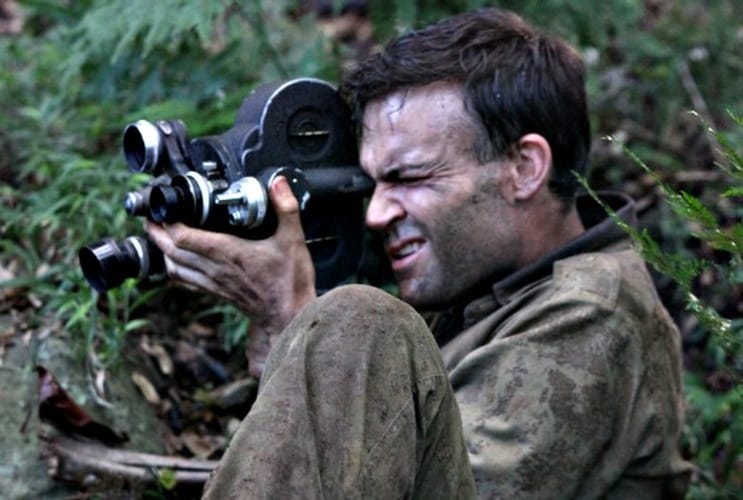An ideal companion piece to 2006's Kokoda, the made-for-television Parer's War finds director Alister Grierson overseeing another World War II story involving Australia's efforts fighting the Japanese in Papua New Guinea. Scripted by the late Alison Nisselle, who adapted Neil McDonald's 1994 novel, Parer's War is not about a specific soldier or military campaign; instead, it's about renowned war photographer Damien Parer, whose 1942 documentary short Kokoda Front Line! earned an Oscar (Australia's first Academy Award). Parer's War is actually the second telemovie about Parer, following 1988's Fragments of War: The Story of Damien Parer, though Grierson's production has the benefit of contemporary special effects and a larger budget.
A combat cameraman, Damien Parer (Matthew Le Nevez) risks his life to capture footage of Australian Imperial Force (AIF) soldiers on the frontlines of the Second World War. After working on the battlefields of New Guinea to film Australia fighting the Japanese, including along the Kokoda Trail, Parer returns to Australia to deliver the reels to his employers at the Department of Information. However, the Department improperly handles his footage, deceiving the public by glamorising frontline combat, leading to intense dissatisfaction from Parer, who desperately wants to tell the truth about the conditions under which Australia is fighting overseas. Parer wishes to return to the battlefield alongside the infantry to continue his essential work, but the Department assigns him to cover "fluff" pieces, leading to intense disagreements. Meanwhile, between his deployments, Parer meets Marie Cotter (Adelaide Clemens), and the pair begin an intimate relationship that gradually blossoms.
It is easy to see why Parer's story was selected for dramatisation, as it carries all the hallmarks of a satisfying, mainstream-friendly war movie. Parer's efforts on the frontline invoke a strong anti-war message, resulting in powerful imagery of wounded soldiers in the aftermath of battle, while the photographer's disagreements with the Australian government are distinctly anti-bureaucratic. Additionally, Parer's relationship with Marie adds further dramatic weight to the story, and the movie culminates with a potent gut punch of an ending. The story's historical accuracy is unclear, but the broad strokes are true-to-life and nothing reeks of egregious Hollywoodisation. (Parer having a PTSD flashback is too on-the-nose, however.) Unfortunately, despite mostly competent performances from a capable cast, Grierson's storytelling is not always engaging. The movie does spring to life in fits and starts, particularly when dealing with beefy story material (for example, Parer's employer releasing uncleared footage that puts the troops at risk) or when Parer is working alongside the AIF soldiers. However, things are often too sedate when Parer is in Australia, with the film needing a more robust editing rhythm.
Working with a modest budget, Grierson and his crew believably recreate Australia in the 1940s, nailing everything from the fashion to the household decor, while a selection of old-fashioned songs fills the soundtrack. Newsreel footage looks rough and grainy, and the accompanying sound is spot-on, from the dramatic music to the audio's distinctly "mono" pitch. Furthermore, the wartorn frontlines in New Guinea look convincing, showing an encouraging attention to detail in the military uniforms and vehicles, as well as the production design. Grierson stages several fierce battle scenes, though the violence is noticeably tame due to the picture's television origins, which does detract from the intensity. However, the cinematography is more problematic. Although the movie looks well-composed and carries an evocative colour palette, there is no getting past the clean, glossy digital photography, which instantly makes Parer's War look like a low-budget made-for-TV movie. War stories from this period require more grit to heighten realism and verisimilitude. Particularly with Parer shooting on film reels during the movie, it would have been more appropriate from a thematic and aesthetical standpoint for cinematographer Mark Wareham (Kokoda, Underbelly) to shoot the picture on 35mm film. Despite the credible period detail and a similar budget to Kokoda, it looks noticeably chintzy.
Parer's War is not a masterpiece that rivals cinema's greatest war pictures, but it's a competent television movie that effectively preserves an intriguing story. Despite its technical and storytelling shortcomings, it deserves more attention, especially from movie-goers who enjoy war films.
7.0/10
 Login
Login

